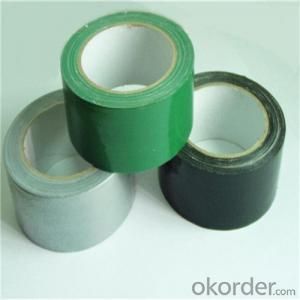Thread Seal Tape on PVC: The Leak-Proof Solution
PVC pipes are a popular choice for many plumbing and construction projects due to their durability, affordability, and ease of installation. However, even the best pipes can develop leaks over time. That’s where thread seal tape comes into play. This handy tool is a leak-proof solution that can save you time, money, and frustration. In this article, we’ll explore the benefits of using thread seal tape on PVC pipes, how to apply it correctly, and some tips for ensuring a long-lasting seal.
The Benefits of Thread Seal Tape
Thread seal tape, also known as plumber’s tape or Teflon tape, is a type of adhesive tape made from a polymer called PTFE (polytetrafluoroethylene). It’s designed to create a watertight seal on threaded pipe connections. Here are some of the key benefits of using thread seal tape on PVC pipes:
1. Leak prevention: The primary purpose of thread seal tape is to prevent leaks in pipe connections. By wrapping the tape around the male threads of the pipe, you create a barrier that prevents water from seeping through the threads.
2. Easy application: Applying thread seal tape is a simple process that doesn’t require any special tools or expertise. All you need is a roll of tape and a few minutes of your time.
3. Cost-effective: Thread seal tape is an affordable option for sealing pipe connections, especially when compared to other methods like pipe dope or specialized sealants.
4. Compatibility: Thread seal tape is compatible with a wide range of materials, including PVC, copper, brass, and steel pipes. This makes it a versatile solution for various plumbing and construction projects.
5. Reusability: Unlike some sealants that harden and lose their effectiveness over time, thread seal tape can be reused multiple times on the same pipe connection.
How to Apply Thread Seal Tape on PVC Pipes
Applying thread seal tape to PVC pipes is a straightforward process, but it’s important to follow the correct steps to ensure a leak-proof seal. Here’s a step-by-step guide on how to apply thread seal tape on PVC pipes:
1. Clean the pipe threads: Before applying the tape, make sure the male and female threads are clean and free of any dirt, debris, or old sealant. Use a clean cloth or a pipe cleaner to remove any contaminants.
2. Cut the tape: Cut a piece of thread seal tape long enough to wrap around the pipe threads. A general rule of thumb is to cut a piece that’s at least 1/2 the diameter of the pipe.
3. Wrap the tape: Start wrapping the tape around the male threads of the pipe, making sure to cover the entire thread. Apply the tape in a clockwise direction, overlapping each layer by about 1/3 to ensure full coverage.
4. Tighten the connection: Once the tape is in place, tighten the pipe connection by hand or with a wrench. Be careful not to overtighten, as this can damage the threads and compromise the seal.
5. Check for leaks: After the connection is tightened, check for any leaks by turning on the water supply and observing the connection. If you notice any leaks, try tightening the connection further or adding another layer of tape.
Tips for a Long-Lasting Seal
While thread seal tape is an effective solution for preventing leaks, there are some additional tips you can follow to ensure a long-lasting seal:
1. Use the right tape: Not all thread seal tapes are created equal. Look for a high-quality tape that’s specifically designed for use with PVC pipes.
2. Apply the right amount: Don’t overdo it with the tape. Applying too much tape can actually create a weaker seal, so stick to the recommended number of wraps.
3. Maintain the threads: Regularly inspect and clean the pipe threads to prevent damage and ensure a tight connection.
4. Avoid extreme temperatures: Thread seal tape works best in a range of temperatures between -40°F and 500°F. Avoid using it in situations where the tape may be exposed to extreme heat or cold.
5. Replace the tape periodically: Over time, the adhesive on the tape can weaken, so it’s a good idea to replace the tape every few years or whenever you notice signs of wear.
In conclusion, thread seal tape is a leak-proof solution for PVC pipe connections. It’s easy to apply, cost-effective, and compatible with a wide range of materials. By following the proper application steps and taking some additional precautions, you can ensure a long-lasting, leak-free connection. So the next time you’re working on a plumbing or construction project, don’t forget to keep some thread seal tape on hand. It could save you a lot of headaches down the road.

